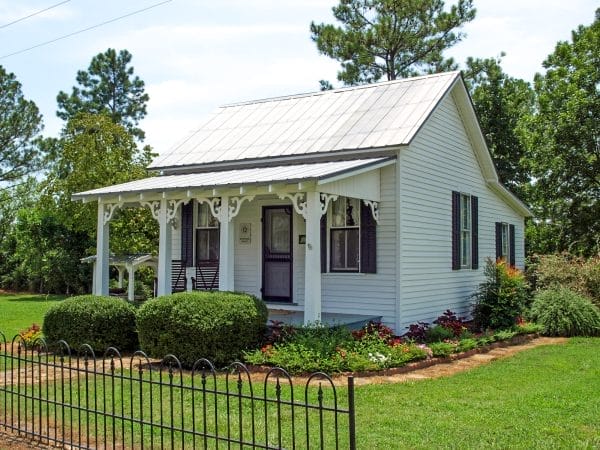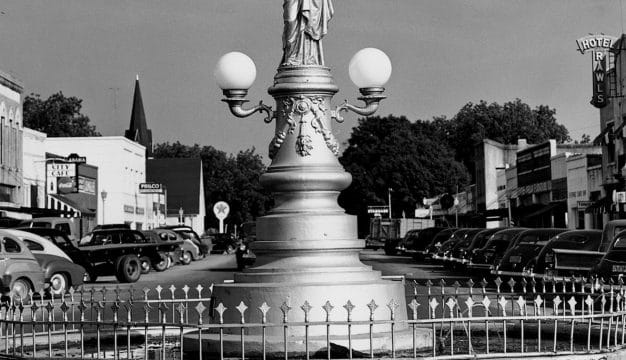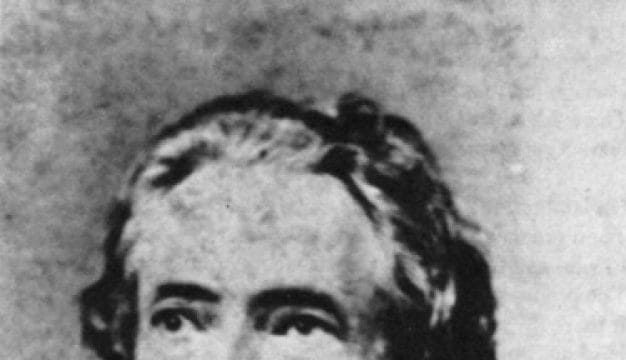Weiss Cottage
The Weiss Cottage in Cullman, Cullman County, is the oldest home in the city and a historic home museum that preserves and highlights the history of life in Cullman over the past century and a half. The home is named for Aldo Weiss, a physician who lived in the home and also used it as his medical office.
 Weiss Cottage
In 1873, the Louisville & Nashville Railroad constructed a wood-framed building along its rail line that bisected Cullman in what was then Blount County. On February 24, 1875, the home, then located at 206 Sixth Ave SE, was purchased from the railroad by Weiss, a German immigrant who moved to the area from Cincinnati, Ohio, at the behest of city founder Johann (John) Cullman. The small cottage housed Weiss, his wife Magdalena, and their three children. It also served as his medical office, where he was a practicing physician and an accoucheur, or male midwife. Because Weiss also kept his goats in the cellar, the home thus came to be known locally as “The Goat House.”
Weiss Cottage
In 1873, the Louisville & Nashville Railroad constructed a wood-framed building along its rail line that bisected Cullman in what was then Blount County. On February 24, 1875, the home, then located at 206 Sixth Ave SE, was purchased from the railroad by Weiss, a German immigrant who moved to the area from Cincinnati, Ohio, at the behest of city founder Johann (John) Cullman. The small cottage housed Weiss, his wife Magdalena, and their three children. It also served as his medical office, where he was a practicing physician and an accoucheur, or male midwife. Because Weiss also kept his goats in the cellar, the home thus came to be known locally as “The Goat House.”
On December 18, 1889, Weiss sold the home to a local judge named S. L. Fuller, who lived there with his wife Evelyn (one of Cullman’s early postmistresses) and their seven children. The home later exchanged hands several times before it was purchased in 1917 by Charles Ruehl, who owned a local blacksmith shop and wagon factory. It stayed in the Ruehl family until 1976, when its owner, Inez Ruehl, wanted to use the property for other purposes and donated the home to the city of Cullman with the stipulation that the city move the building to a new site. That year, the home was moved to its present location at 401 1st Ave SW and restoration was begun as part of the city’s Bicentennial Project for the 1976 nationwide Bicentennial Celebration.
Restoration of Weiss Cottage was conducted by numerous cooperating historical, governmental, and civic organizations in Cullman. During the restoration, several layers of old wallpaper were carefully removed to uncover the original, which was matched and replaced to bring the home back to its original state. The home’s connection to the railroad is evident in the original windowsills, which are constructed with actual railroad ties and nails. The interior of the home is furnished with items typical of nineteenth-century life and contains a few pieces of Weiss’s original medical equipment. The area around the home was landscaped by the Cullman Federation of Garden Clubs. On January 25, 1977, the Weiss Cottage was added to the Alabama Register of Landmarks and Heritage by the Alabama Historical Commission. In April 1985, the Cullman Downtown Commercial Historic District, in which the Weiss Cottage is located, was placed on the National Register of Historic Places.
On April 27, 2011, an EF4 tornado struck downtown Cullman, destroying much of the Commercial Historic District as part of the 2011 Super Outbreak, the largest, costliest, and deadliest tornado outbreak ever recorded. Damage to the Weiss Cottage was repaired and the museum was reopened to the public on May 11, 2012. The Weiss Cottage is currently operated by the nearby Cullman County Museum and is available to be shown by appointment. Also nearby are numerous historical markers and the Ave Maria Grotto.



